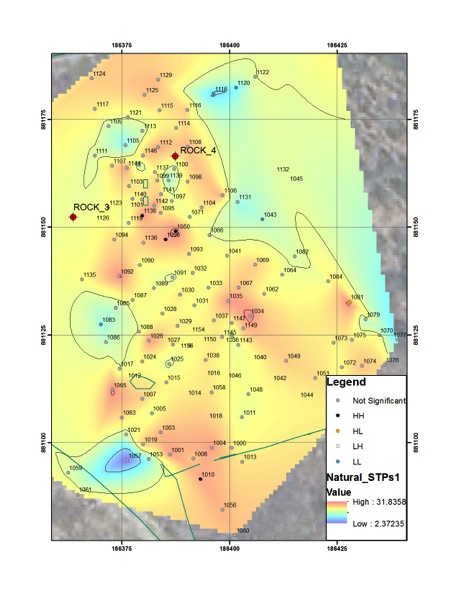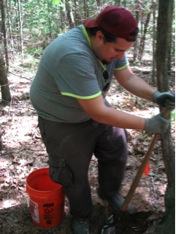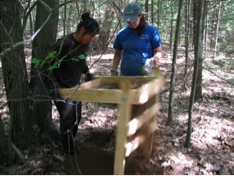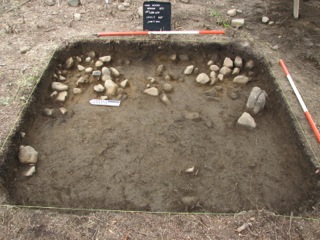As a general rule archaeologists have to be flexible, willing to rework their hypotheses and sampling strategies over the course of a project. Though we recovered nails, brick, and creamware from our 2 X 2 M units, which date our deposits to the correct time period, we aren’t satisfied that that particular area is the site of Deb Newman’s late 18th/early 19th c. home. To determine if the artifacts we found in our original excavation area were the result of artifacts washing down slope from a possible barn foundation higher up Keith Hill, we’ve begun digging shovel test pits every 10 M between the foundation and treeline. The test pits were based in part on a map created in ArcGIS by Doug Bolender of the Fiske Center showing statistically significant clusters of “A horizon”, the geographic strata where material culture related to Deb Newman would be located, from the 2010 and 2011 shovel test pits (pictured below).

Map of the Deb Newman site showing areas where STPs with deeper than normal “A horizon” (cultural strata) are clustered around one another (areas in black, “HH” on key”), potentially indicating human activity; the background (Natural_STPs 1 Value on the key) shows general “A horizon” depth across the area between the road and treeline)
While in another context the color change in the soil might suggest that these stones were used for drying fish or meat, the lack of artifacts point to the color resulting from excessive iron in the soil from the stones. The area also has the potential to be a riverbed, but we won’t know more until Dennis Piechota, the conservator at the Fiske Center who specialized in micromorphology, micro-excavation and elemental analysis of artifacts and the soil matrix, is able to examine them.
By: Jessica Rymer




